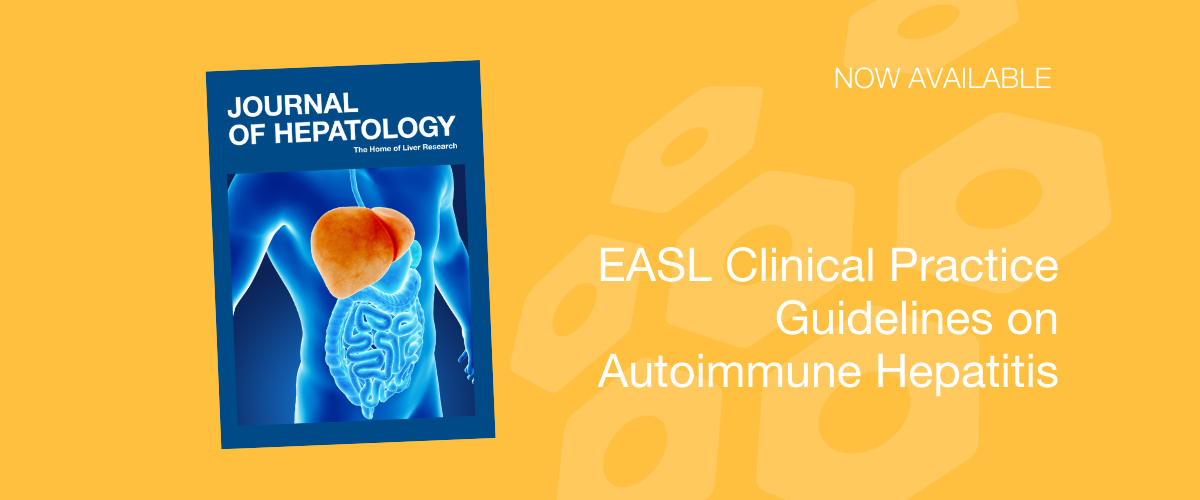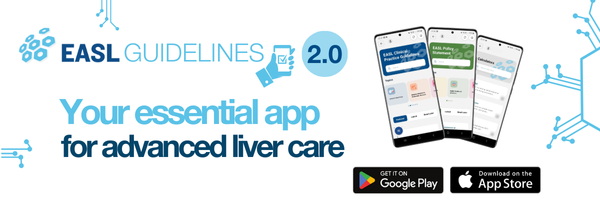New EASL Clinical Practice Guidelines on the management of Autoimmune Hepatitis

EASL has released its newly updated Clinical Practice Guidelines (CPGs) on Autoimmune Hepatitis (AIH), bringing substantial revisions to the previous 2015 edition. Developed through a structured approach using PICO questions and a two-round Delphi panel process, the 2025 guidelines reflect recent evidence and expert consensus aimed at improving diagnostic accuracy, enhancing therapeutic outcomes, and promoting more consistent clinical practice across diverse healthcare systems.
Key changes from the 2015 edition
One of the most notable updates is the removal of recommendations to subclassify AIH based on autoantibody profiles such as ANA, SMA, LKM1, or LC1. This change reflects growing consensus that such subclassifications do not offer meaningful clinical distinctions or require different treatment strategies. In terms of laboratory diagnostics, the guidelines now support the use of indirect immunofluorescence testing on HEp-2 cell substrates and ELISA-based autoantibody assays as alternatives to the traditional IIF method on rodent tissue, provided that assay characteristics and validated cut-offs are taken into account. Nonetheless, the traditional multi-organ substrate method remains the preferred reference when available.
Histopathology also sees a critical update, as the guidelines now incorporate criteria proposed by the International Autoimmune Hepatitis Pathology Group. These new standards are designed to support more consistent and standardised interpretation of liver biopsies, which remain a cornerstone of AIH diagnosis.
In managing treatment response, the guidelines recommend evaluating complete biochemical response and insufficient response within a broader window of 6 to 12 months rather than strictly at 6 months. This change acknowledges the variability in how patients respond to treatment in real-world clinical settings.
Therapeutically, the updated guidelines introduce Mycophenolate mofetil as a viable and safe first-line alternative to azathioprine. It is now recognised for its comparable or even superior efficacy and reduced rate of adverse events. However, clinicians are cautioned about its teratogenic risks, particularly in patients of reproductive age. Budesonide, which had previously been recommended as part of first-line therapy, is no longer endorsed due to concerns regarding its safety and overall effectiveness.
For pediatric patients, the guidelines now include specific recommendations for effective treatment and long-term management, including guidance for those under six years old and children with AIH/primary sclerosing cholangitis (PSC) overlap syndromes.
Implications for daily clinical practice
The updated guidelines are poised to significantly improve everyday clinical management of AIH by offering comprehensive, clearly defined recommendations that span the entire disease spectrum—from diagnosis and initial treatment to long-term follow-up. They offer clinicians practical guidance on interpreting lab results, determining when to perform liver biopsies, and how to tailor treatment strategies based on patient-specific factors such as disease severity and treatment response. They also offer solutions to complex clinical challenges, such as how to proceed with patients who do not achieve complete biochemical response, how and when to consider withdrawing therapy, and how to approach refractory or atypical cases. Structured algorithms and updated response criteria make it easier for clinicians to make timely, confident, and individualised decisions.
Promoting standardised treatment and monitoring
By providing an evidence-based framework that clearly outlines treatment goals, response criteria, and therapeutic pathways, the guidelines are a critical tool for promoting standardisation across clinical practices. They are expected to help reduce variability in care and ensure that patients receive consistent, high-quality management regardless of where they are treated. This harmonisation is particularly crucial in chronic conditions like AIH, where long-term outcomes depend heavily on consistent monitoring and appropriate therapeutic adjustments.
Adapting to global healthcare contexts
With the incidence and awareness of AIH increasing globally, EASL has made an effort to ensure that the guidelines are applicable across a range of healthcare settings. While liver biopsy and autoantibody testing are strongly recommended, the guidelines also recognise the limitations that clinicians in low-resource settings may face. In such cases, they emphasise maintaining a high index of suspicion and encourage referral to specialised centers where appropriate, ensuring that the core principles of diagnosis and treatment are upheld even when access to advanced diagnostics is limited.
Enhancing access with the EASL Guideline App
To support widespread adoption and practical use of the guidelines, EASL has also made them available through its dedicated Guideline app. This digital tool allows clinicians to access up-to-date recommendations at the point of care, helping to streamline decision-making and improve patient outcomes. The app is especially valuable in busy clinical environments and resource-limited settings, where quick access to evidence-based guidance can make a significant difference. By enhancing usability and dissemination, the app plays a critical role in the broader implementation and impact of the guidelines.


